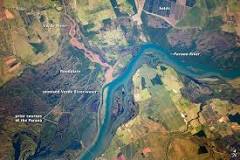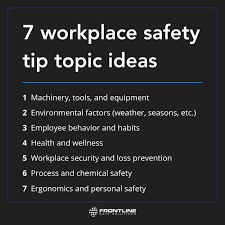The Importance of Understanding Floodplains
When it comes to managing the risks associated with flooding, understanding floodplains is crucial. A floodplain is an area of land that is prone to flooding during periods of heavy rainfall or when rivers overflow their banks. These natural low-lying areas play a significant role in the ecosystem and can have a profound impact on communities and infrastructure.
Key Characteristics of Floodplains
Floodplains are typically located adjacent to rivers, streams, or other bodies of water. They are characterized by their flat topography and fertile soil, making them attractive for agriculture and development. However, the very features that make floodplains desirable also put them at risk during flood events.
The Role of Floodplains in Mitigating Flood Damage
Despite the risks they pose, floodplains serve an essential function in mitigating flood damage. When rivers overflow onto floodplains, they help to slow down the flow of water, reducing the risk of flash floods downstream. Additionally, the vegetation and wetlands found in floodplains can absorb excess water and filter out pollutants before they reach larger bodies of water.
Challenges and Considerations
As populations grow and development expands into flood-prone areas, managing floodplains becomes increasingly complex. Balancing the need for economic development with the importance of preserving natural floodplain functions requires careful planning and coordination among stakeholders.
Best Practices for Managing Floodplains
- Zoning Regulations: Implementing zoning regulations that restrict development in high-risk floodplain areas can help reduce potential damage from floods.
- Floodplain Mapping: Accurate mapping of floodplain boundaries is essential for effective land use planning and emergency response preparedness.
- Natural Infrastructure: Preserving or restoring natural features within floodplains, such as wetlands and riparian buffers, can enhance their ability to absorb water and reduce flooding impacts.
Conclusion
Understanding the role of floodplains in our environment is key to building resilient communities that are better equipped to handle flooding events. By recognizing the importance of these dynamic landscapes and implementing sustainable management practices, we can minimize risks and protect both people and nature from the devastating effects of floods.
Essential Tips for Managing Floodplain Risks and Protecting Your Property
- Avoid building on floodplains to reduce the risk of flooding damage.
- If you live in a floodplain, consider purchasing flood insurance to protect your property.
- Be aware of local emergency evacuation routes in case of flooding in your area.
- Keep important documents and valuables in a waterproof container or stored at a higher level to prevent water damage during floods.
- Plant native vegetation along riverbanks and streams to help absorb excess water and reduce erosion in floodplains.
- Regularly monitor weather forecasts and warnings to stay informed about potential flooding events.
- Create an emergency preparedness kit with essentials such as food, water, medications, and first aid supplies in case of flooding emergencies.
- Consult with local authorities or experts for guidance on floodplain management strategies specific to your area.
- Educate yourself and your family members about the risks associated with living in or near a floodplain.
Avoid building on floodplains to reduce the risk of flooding damage.
To minimize the potential impact of flooding, it is advisable to refrain from constructing buildings on floodplains. By avoiding development in these high-risk areas, we can significantly reduce the likelihood of flood damage to properties and infrastructure. Building on floodplains not only puts structures at risk during flood events but also disrupts the natural functions of these vital ecosystems. Embracing this proactive approach can help safeguard communities and promote sustainable land use practices that prioritize safety and resilience in the face of flooding threats.
If you live in a floodplain, consider purchasing flood insurance to protect your property.
Living in a floodplain comes with inherent risks, making it crucial to take proactive measures to safeguard your property. One essential step is to consider purchasing flood insurance to protect your home and belongings in the event of a flood. Flood insurance can provide financial assistance for repairs, replacements, and rebuilding efforts, offering peace of mind and security during challenging times. By investing in flood insurance, you can mitigate potential losses and ensure that you are better prepared to recover from the impacts of flooding on your property.
Be aware of local emergency evacuation routes in case of flooding in your area.
It is crucial to be aware of local emergency evacuation routes in case of flooding in your area. Knowing the designated evacuation routes can save valuable time and potentially lives during a flood emergency. Familiarize yourself with the nearest evacuation routes and have a plan in place to evacuate safely and efficiently if necessary. Stay informed about flood warnings and alerts issued by local authorities, and be prepared to follow evacuation orders promptly to ensure your safety and that of your loved ones.
Keep important documents and valuables in a waterproof container or stored at a higher level to prevent water damage during floods.
To safeguard important documents and valuables during floods, it is advisable to store them in a waterproof container or at a higher level. By taking this precautionary measure, you can minimize the risk of water damage and protect your essential items from potential harm. Keeping documents and valuables safe and secure ensures that you can access crucial information and preserve cherished possessions even in the event of a flood emergency.
Plant native vegetation along riverbanks and streams to help absorb excess water and reduce erosion in floodplains.
Planting native vegetation along riverbanks and streams in floodplains is a practical and effective tip for flood management. Native plants have deep root systems that can absorb excess water, helping to reduce the risk of flooding by increasing the soil’s capacity to hold water. Additionally, these plants help to stabilize the soil and prevent erosion during flood events, preserving the integrity of the floodplain ecosystem. By incorporating native vegetation into floodplain restoration efforts, communities can enhance resilience against floods while promoting biodiversity and environmental sustainability.
Regularly monitor weather forecasts and warnings to stay informed about potential flooding events.
Regularly monitoring weather forecasts and warnings is crucial for staying informed about potential flooding events in floodplain areas. By staying up-to-date on weather patterns and alerts, individuals and communities can proactively prepare for impending floods, take necessary precautions, and ensure the safety of residents and property. Timely information from weather authorities can help guide evacuation plans, deployment of resources, and overall flood response efforts to mitigate risks and minimize the impact of flooding on floodplain regions.
Create an emergency preparedness kit with essentials such as food, water, medications, and first aid supplies in case of flooding emergencies.
Creating an emergency preparedness kit is a crucial step in ensuring your safety during flooding emergencies. Include essential items such as non-perishable food, bottled water, medications, and first aid supplies to sustain yourself and your family in case of isolation or evacuation. Having a well-stocked emergency kit can make a significant difference in your ability to cope with the challenges that may arise during a flood event. Be proactive and prepare ahead of time to protect yourself and your loved ones during emergencies.
Consult with local authorities or experts for guidance on floodplain management strategies specific to your area.
Consulting with local authorities or experts for guidance on floodplain management strategies specific to your area is essential for effective flood risk mitigation. Local officials and experts possess valuable knowledge about the unique characteristics of your region’s floodplains and can provide tailored recommendations to help you better prepare for and respond to potential flooding events. By seeking their expertise, you can gain insights into zoning regulations, emergency response protocols, and sustainable land use practices that are crucial for enhancing community resilience in the face of floods. Remember, proactive collaboration with local stakeholders is key to developing comprehensive floodplain management strategies that prioritize safety and environmental protection.
Educate yourself and your family members about the risks associated with living in or near a floodplain.
It is essential to educate yourself and your family members about the risks associated with living in or near a floodplain. Understanding the potential dangers of flooding, such as property damage, safety hazards, and disruptions to daily life, can help you make informed decisions about how to prepare for and respond to flood events. By staying informed and aware of the specific risks in your area, you can take proactive measures to protect your loved ones and property from the impacts of flooding.




